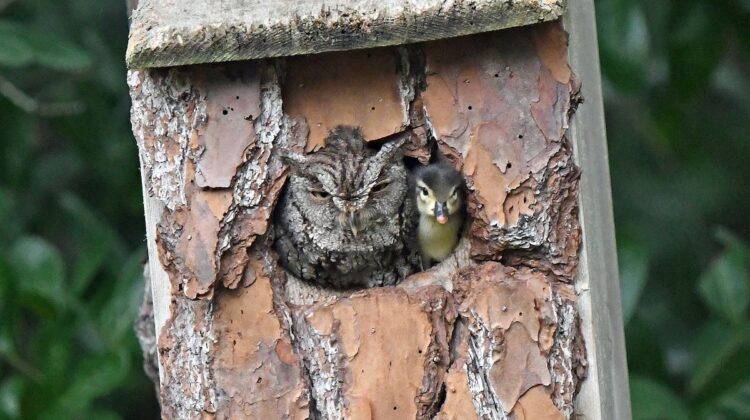
Wood duck parents frequently put some of their eggs in the nests of other birds as brood parasites. It’s a method for having as many children as possible reach maturity, and it may lead to some unusual scenarios.
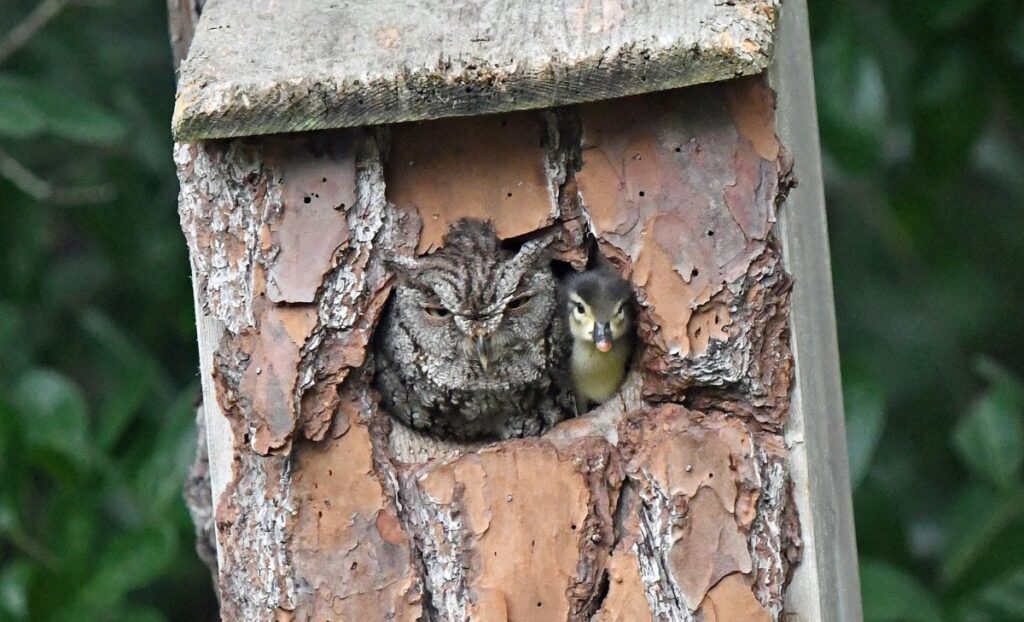
According to National Geographic, Laurie Wolf, a wildlife artist and amateur photographer, observed a little fluffy bird bobbing up and down within the nest box in her Jupiter, Florida, garden one day. An eastern screech owl had set up residence there a few weeks prior, so Wolf assumed it was an owl chick. But it wasn’t the case.
The photographer and her husband eventually caught a sight of the mother owl peeking her head out of the nest box as a storm rolled in and the sky darkened. And there was a small yellow-and-black duckling peeking out from her side.
“They were just sitting there side by side,” Wolf explained. “It’s impossible to believe.” To this day, I find it hard to believe.”
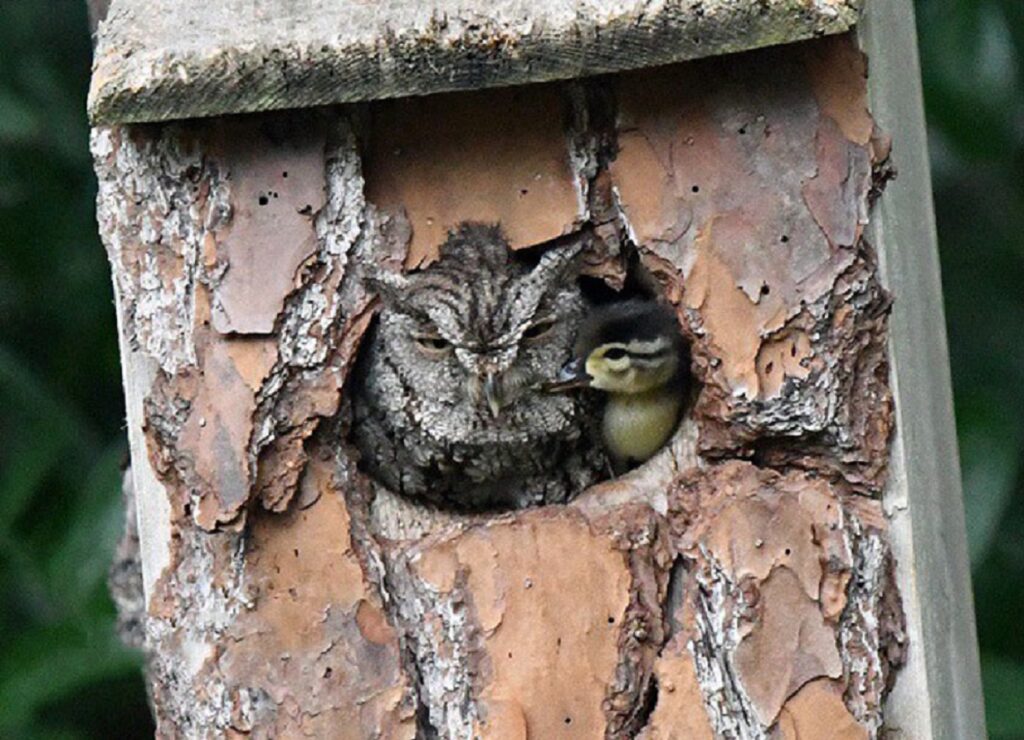
Wold phoned a raptor specialist once she recovered from her surprise, as she was afraid that the predatory owl might eat the wood duck chick. Following the expert’s confirmation that the duckling was in danger, a local wildlife sanctuary promised to care for the animal if she managed to catch it.
However, just as she and her husband were going to attempt to capture the small bird, it leaped from the nest box and “beelined” to a nearby pond. Since then, the pair hasn’t seen it.
“I don’t think I’ll ever have another event like that in my life,” Wolf remarked.
However, Christian Artuso, the Manitoba director of Bird Studies Canada, believes she may be mistaken. Wood ducks have previously been observed coexisting alongside eastern screech owls. In 2005, while researching eastern screech owls for his Ph.D., Artuso made a similar finding. According to Artuso, who reported the findings in the Wilson Journal of Ornithology in 2007, the female owl was able to incubate and hatch three wood duck offspring in that circumstance.
“It’s not well documented, but it does occur,” Artuso said. “We know it happens, but we have no idea how often it happens.” So seeing another example of this made me pleased.”
Wood ducks, like cuckoos, are brood parasites, which means that their parents may occasionally deposit an egg or two in the nest of another wood duck or a closely similar species. Spreading their eggs in this way increases their chances of passing on their genes marginally, particularly if they lose their own eggs to a predator.
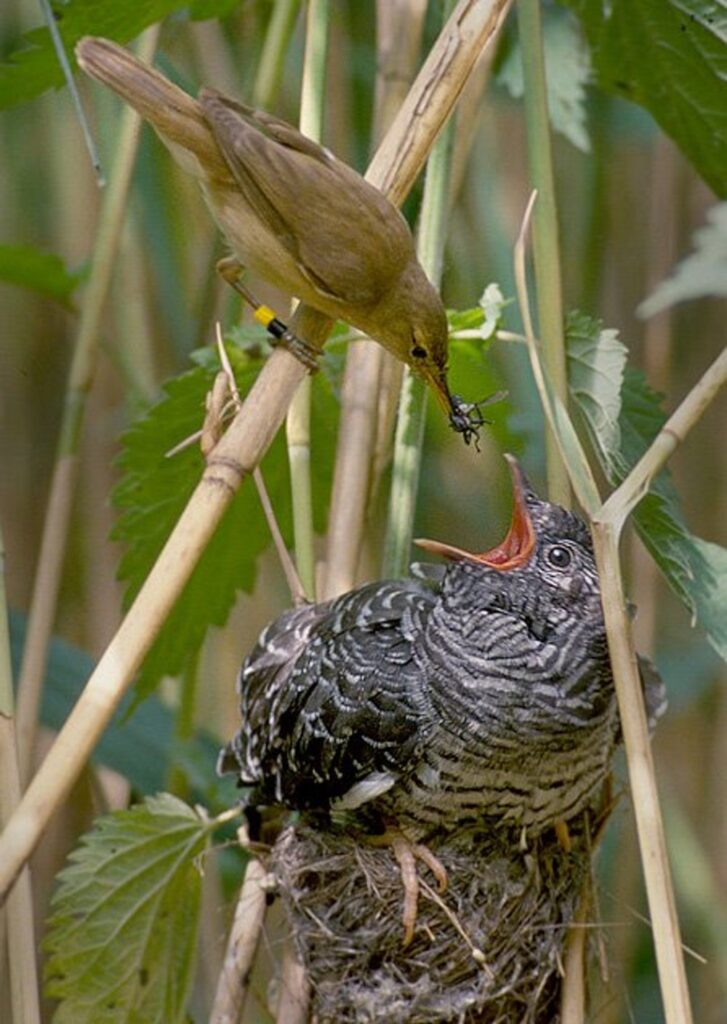
Other instances of birds of prey incubating waterfowl eggs have been documented, such as an American kestrel hatching a bufflehead and an osprey raising a clutch of Canada geese.
But why doesn’t the female predator notice she’s sitting on the incorrect eggs? Wood duck eggs, for example, are not just oblong in form but also nearly double the size of owl eggs. According to Artuso, it’s hard to know what’s going on inside the wild owl’s mind, but the incident might be an example of “supernormal stimulation.”
“The parents may be thinking to themselves, ‘Oh my gosh!’ This egg is enormous! We’re going to have the most amazing baby!”
However, it’s more likely that it occurs so infrequently that the eastern screech owl hasn’t evolved a defense.
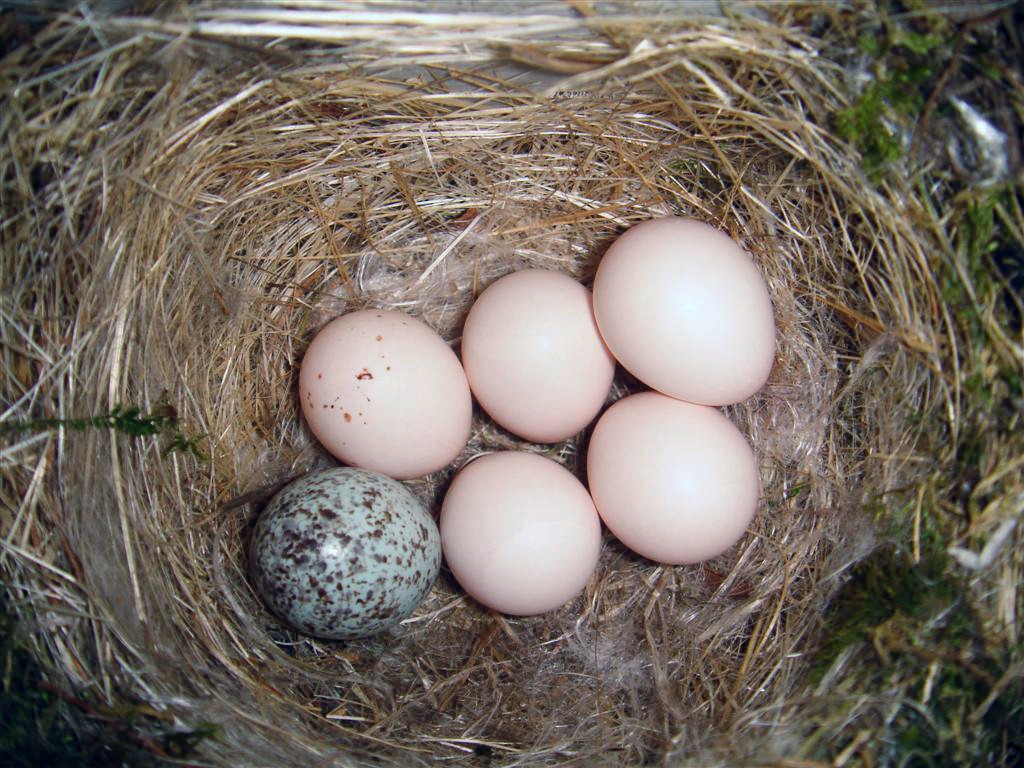
But, more importantly, has the duckling survived? It may have, according to Artuso. Wood duck chicks are precocial, which means they are self-sufficient from the start. There have also been several instances where chicks from one brood have mated with chicks from another brood.
So, even if it was born by an owl, the small wood duck chick may have survived.
